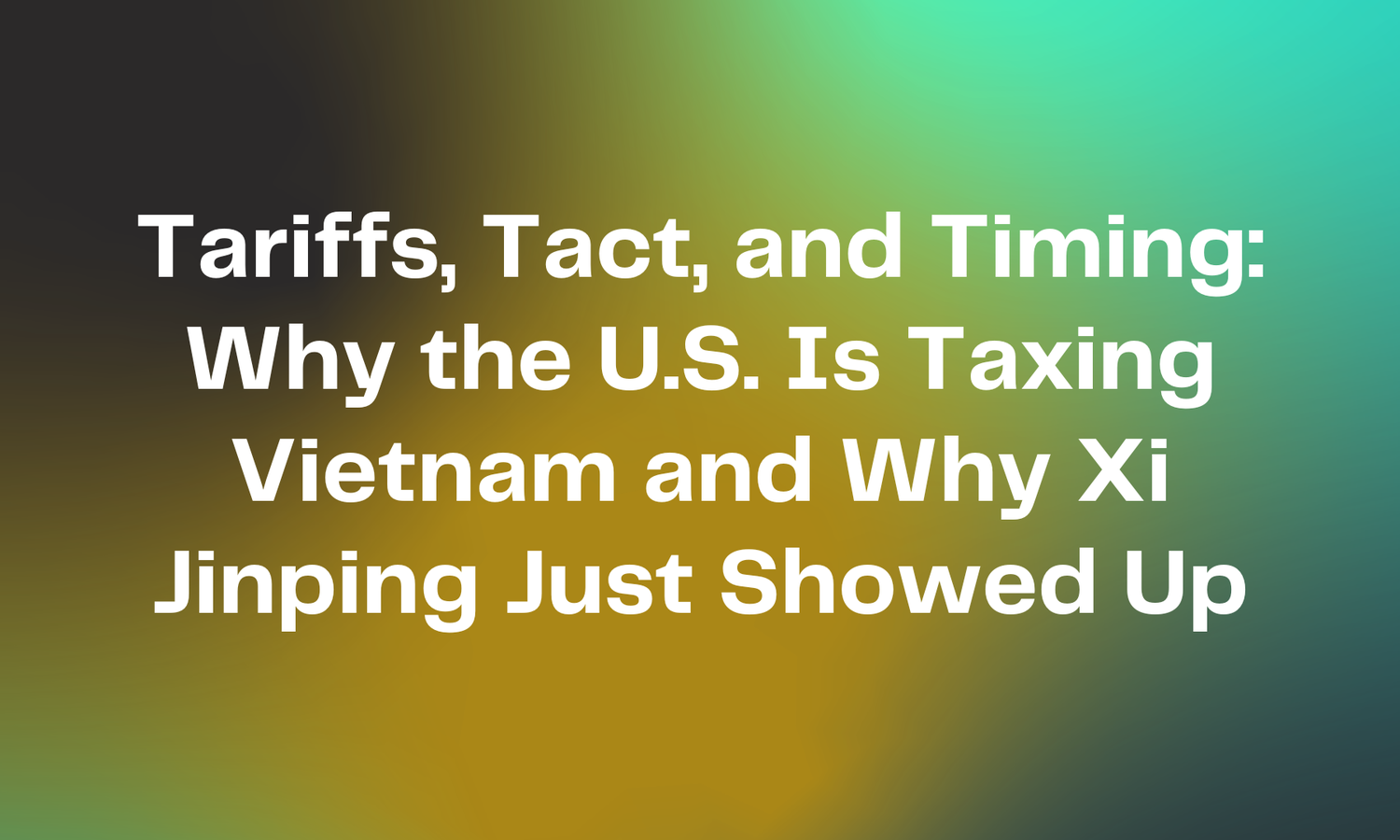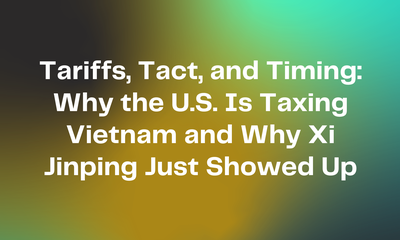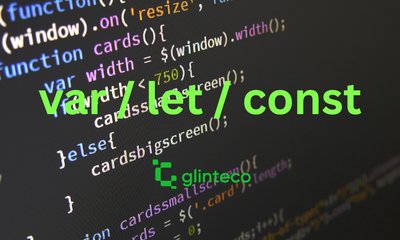Tariffs, Tact, and Timing: Why the U.S. Is Taxing Vietnam and Why Xi Jinping Just Showed Up
By JoeVu, at: April 15, 2025, 10 p.m.
Estimated Reading Time: __READING_TIME__ minutes


Vietnam is trending again.............but not for tourism, food or culture.
This week, the U.S. announced new tariffs, targeting steel, EV batteries, solar panels, and semiconductor-related products coming from Vietnam.
A few days later, TODAY, Xi Jinping touched down in Hanoi - his timing, as always, suspiciously perfect.
So what’s really going on here? Let’s decode the geopolitical drama, the economic chessboard, and the diplomacy dance-off currently unfolding in Southeast Asia.
The U.S. Tariffs: “Friendshoring” with Conditions
Washington is cracking down again.
The Biden administration, citing national security, unfair trade practices, and Chinese supply chain rerouting, has decided to tighten tariffs on Vietnamese imports.
Translation?
“You’re our friend BUT please stop looking so much like our other friend we don’t talk to anymore.”
The irony?
Vietnam has long been praised as the poster child for China+1 (a safe, stable, neutral ground for global manufacturing). Now it’s being reprimanded for being too good at it.
So Why the Pressure?
-
Election season is coming - Tariffs play well with domestic audiences. Both red and blue need a common “problem” to rally around.
-
China rerouting products through Vietnam - The U.S. suspects many goods labeled “Made in Vietnam” still have too much China inside.
-
Tech tension - Vietnam is quietly rising in the chip and green energy sectors. The U.S. wants to shape that early.
Enter Comrade Xi: Surprise Visit or Strategic Flex?
Xi Jinping’s visit to Vietnam wasn’t a casual drop-in.
He’s here to remind Hanoi who its neighbor is, and maybe offer a few deals wrapped in ancient proverbs and long-term debt.
But make no mistake:
China is nervous. Vietnam has been getting cozy with the U.S., Japan, and India. It’s hosted top leaders, inked defense deals, and welcomed Western capital faster than Beijing can say “Belt and Road.”
During President Xi Jinping’s recent visit to Vietnam, former U.S. President Donald Trump made a pointed remark, suggesting that the meeting between China and Vietnam was likely intended to “screw” the United States. While acknowledging the meeting as “wonderful,” Trump expressed skepticism about its implications for U.S. interests.
What’s Vietnam Thinking?
Vietnam’s foreign policy strategy has long been “Bamboo Diplomacy”: bend with the wind, don’t break, and never lean too far in any one direction.
With China on the left and the U.S. on the right, Vietnam’s middle lane is looking crowded but clever.
It’s accepting capital from the U.S., infrastructure from China, and trade deals from the EU while smiling politely and keeping its independence intact.
So Xi’s visit is part nostalgia, part diplomacy, and part subtle “Don’t forget where you came from”.
What Comes Next?
For Vietnam:
-
Short-term tariff pain, especially for export-heavy industries like textiles and electronics
-
Long-term leverage, as more countries court Vietnam to hedge against China
-
A bigger seat at the global table if it can continue to walk the tightrope
For the World:
-
Vietnam will become a strategic battleground for soft power and a bellwether for U.S.-China competition in the region
-
Global companies will need to double-check supply chain origin stories “Made in Vietnam” may not be enough to avoid scrutiny
Final Thought
Vietnam didn’t ask to be in the middle of a U.S.-China power struggle but here it is, playing both sides with calm confidence.
And while tariffs may sting, they also signal something important:
Vietnam is no longer a silent manufacturing hub.
It’s a player. A partner. A pivot point.
The world is watching. And Vietnam, quietly but powerfully, is choosing how to respond with diplomacy, diversification, and maybe… just a little bit of leverage.

![[Japan] Freelancing vs. Outsourcing: Why Outsourcing Firms Are a Better Choice for Businesses 2025](/media/filer_public_thumbnails/filer_public/dc/d2/dcd2c053-17c8-4cb7-87ea-086d952ad84c/japan_freelance_vs_outsourcing_firms_1.png__400x240_q85_crop_subsampling-2_upscale.jpg)

![[Useful Site Review] visily.ai](/media/filer_public_thumbnails/filer_public/60/a0/60a0d519-27a8-4c28-981f-df1a821f1ff0/useful_site_review_visilyai.png__400x240_crop_subsampling-2_upscale.png)

